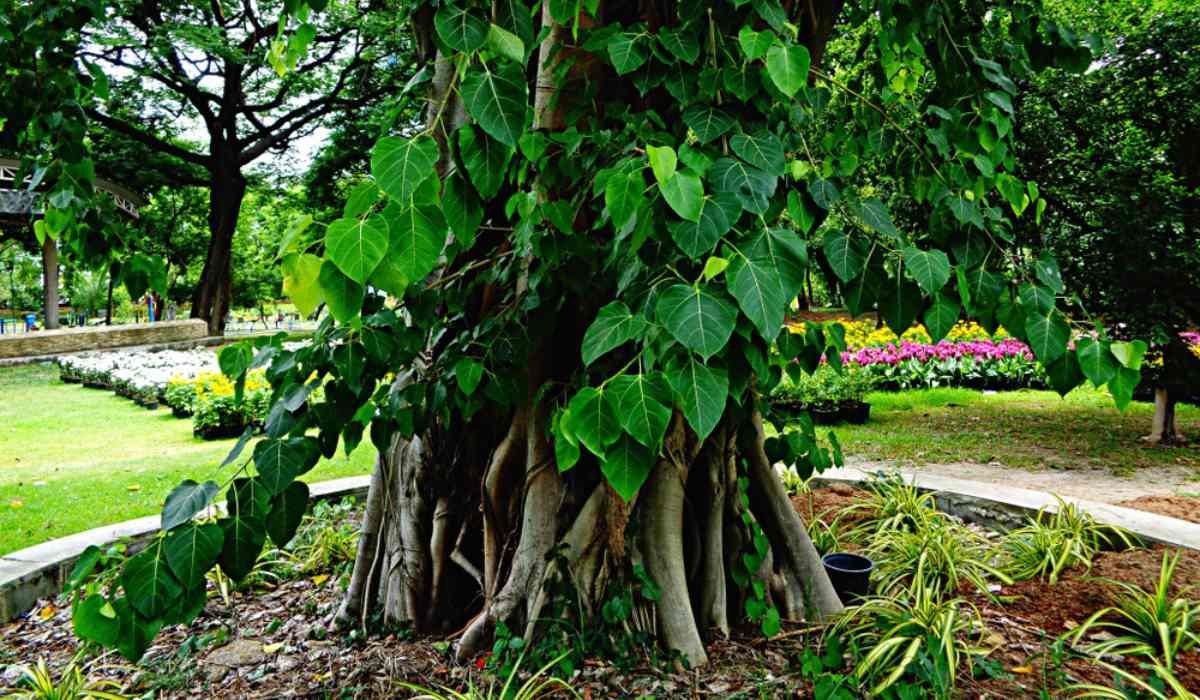The ficus religiosa tree is one of the world s most sacred trees revered by hindus jainists and buddhists they believe the tree to have grown from buddha s original fig tree

The Sacred Ficus Religiosa Tree: A Revered Symbol of Spiritual Significance
Image: 
The Ficus religiosa tree, commonly known as the Peepal tree or the Bodhi tree, holds unparalleled spiritual significance in various religious beliefs around the world. Hindus, Jainists, and Buddhists revere this majestic tree, believing it to be sacred and closely associated with their religious legends and traditions. Deeply rooted in ancient mythology and religious practices, the Ficus religiosa tree continues to be a remarkable embodiment of divinity.
According to the beliefs of Hindus, Jainists, and Buddhists, the Ficus religiosa tree is said to have sprouted from the ground where Gautama Buddha achieved enlightenment. It is believed to be a direct descendant of the original Bodhi tree under which Buddha meditated. This sacred tree in Bodh Gaya, located in the Indian state of Bihar, is a significant pilgrimage site for Buddhists worldwide.
The Ficus religiosa tree stands tall and elegant with its vast canopy spreading wide, providing shelter and shade to those who seek solace in its presence. Its distinct heart-shaped leaves give it an enchanting allure, making it easily recognizable among other tree species. The leaves, believed to be symbolic of purity and spiritual awakening, hold a special place in religious rituals and offerings.
Image:
In Hindu mythology, the Peepal tree symbolizes the Trimurti, the divine trinity consisting of Brahma (the creator), Vishnu (the preserver), and Shiva (the destroyer). It is considered an abode of various Hindu deities, including Lord Krishna, and is believed to possess immense spiritual power. Devotees often circumambulate these revered trees, seeking blessings and spiritual enlightenment. Furthermore, it is believed that tying a thread around the trunk of a Peepal tree fulfills one’s deepest desires.
For Jainists, the Ficus religiosa tree holds great significance as it is widely believed that the first Jain Tirthankara, Rishabhdev, attained enlightenment under a Peepal tree. Jain religious texts mention the presence of Jain temples and scared idols beneath these divine trees. They consider the Peepal tree as an epitome of enlightenment and the path to ultimate liberation from the cycle of birth and death.
Buddhists regard the Ficus religiosa tree as a revered relic of Gautama Buddha’s spiritual journey. They believe that meditating under this sacred tree can bring about enlightenment and inner peace. The Bodhi tree in Bodh Gaya, where Buddha is said to have achieved enlightenment, continues to be an iconic pilgrimage destination for Buddhists worldwide. This particular Ficus religiosa tree holds immense spiritual energy and is a constant source of inspiration for those seeking a deeper understanding of Buddhism.
The beauty and spiritual significance of the Ficus religiosa tree have been cherished for thousands of years. Its enduring presence in religious scriptures, cultural traditions, and rituals serves as a reminder of the intertwined relationship between nature and spirituality. As followers of Hinduism, Jainism, and Buddhism continue to revere this sacred tree, it remains an ever-present symbol of devotion, enlightenment, and the quest for spiritual awakening.
Sources:
Tags
Share
Related Posts
Quick Links
Legal Stuff

